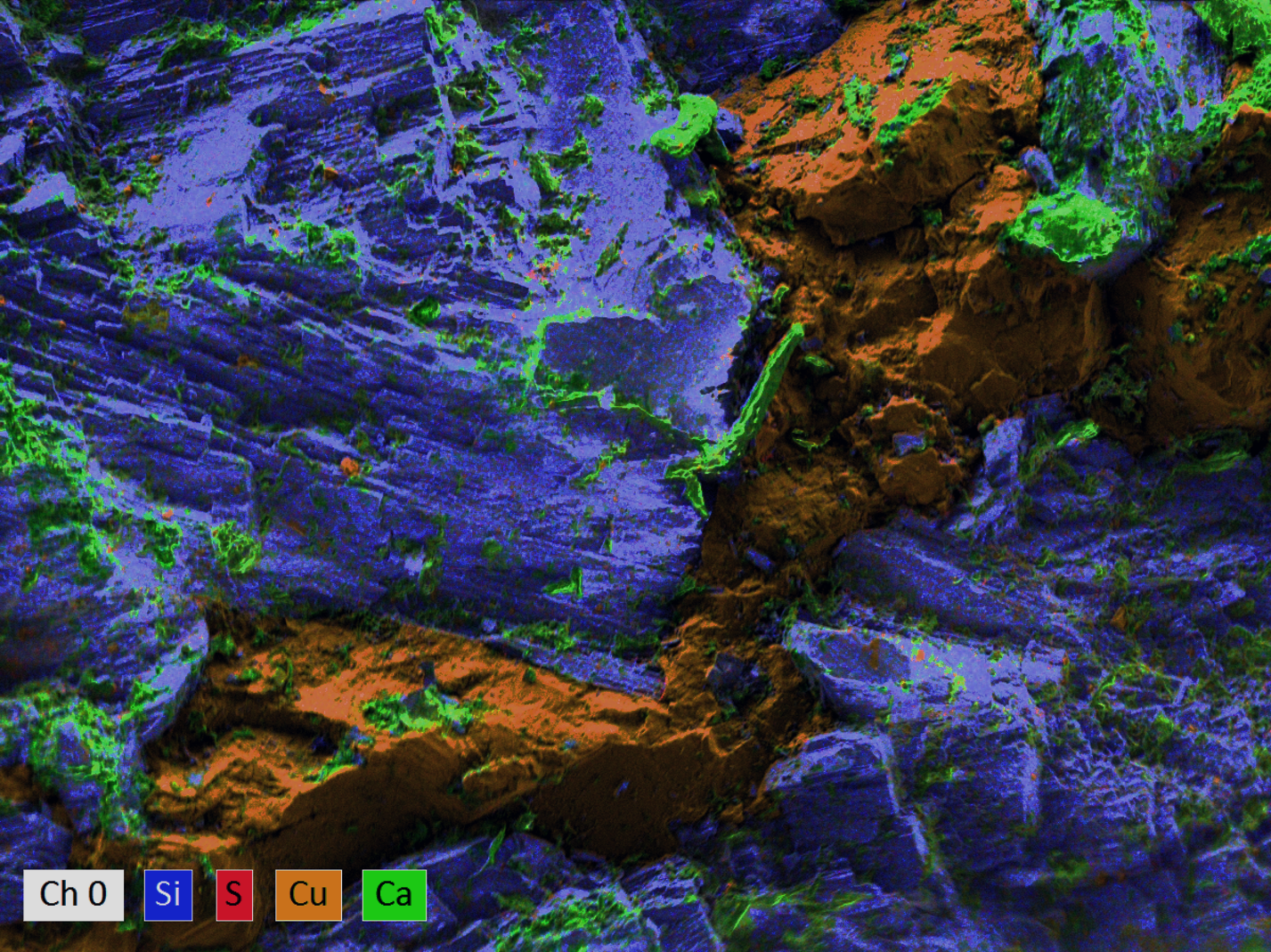

Rock and Mineral Analysis by Scanning Electron Microscopy
Mineralogy Down to the Nanometer
Bruker's Electron Microscope Analyzer range equips any SEM with the ability to analyze the composition and structure of rocks and minerals down to the nanometer. Our range of industry-leading detectors and excitation sources, all integrated through our ESPRIT software, facilitate even the most complex of mineralogical analyses.
Continue reading to find out how our systems for Energy Dispersive Spectroscopy (EDS), Electron BackScatter Diffraction (EBSD), Micro-XRF on SEM and Wavelength Dispersive Spectroscopy (WDS) can be used to solve your analytical challenges.
Energy Dispersive Spectroscopy: Elemental Mapping of Rocks and Minerals
Energy dispersive spectroscopy (EDS) is a microanalytical technique that enables precise, non-destructive characterization of the elemental composition of rocks and minerals, making it an essential tool for analyzing mineralogical samples and investigating geologic processes.
QUANTAX EDS for SEM
QUANTAX EDS delivers fast and reliable elemental analysis for mineralogical applications, providing essential compositional data for a wide range of samples. Its high-quality detectors enable accurate quantification and detailed phase identification, even in complex or fine-grained specimens.
Integrated with Bruker’s ESPRIT software, for analysis and automated deconvolution, QUANTAX EDS is a versatile tool for rapid, high-accuracy mineral characterization in geoscience, mining, and materials research.
QUANTAX FlatQUAD
QUANTAX FlatQUAD is Bruker’s advanced EDS system with a unique annular detector, engineered for unmatched sensitivity in mineral analysis. Its large solid angle delivers ultra-high throughput, enabling rapid compositional mapping of rocks and minerals at low beam currents.
The high takeoff angle minimizes shadowing on rough or topographic samples, ensuring reliable results across diverse specimen types. Combining speed, sensitivity, and adaptability, QUANTAX FlatQUAD delivers superior performance for demanding mineralogical workflows.
Wavelength Dispersive Spectroscopy: Detect Trace Elements Down to the ppm Scale
Wavelength dispersive spectroscopy (WDS) integrated with scanning electron microscopy provides high-resolution, quantitative elemental analysis of rocks and minerals, enabling detection of trace elements and subtle compositional variations critical for petrological research.
QUANTAX WDS
QUANTAX WDS delivers wavelength dispersive spectroscopy (WDS) to your SEM, helping to resolve common peak overlaps found in EDS.
Thanks to lower detection limits, QUANTAX WDS excels at identifying trace elements in complex mineral samples. When paired with EDS, QUANTAX WDS enables rapid, comprehensive compositional analysis across trace, minor, and major elements. This integration, which takes place in our ESPRIT software, is an essential solution for advanced mineralogical characterization.
Micro-XRF: Extend the Range of Conventional Elemental Analysis
Equipping a scanning electron microscope with a micro-XRF excitation source extends the capabilities of conventional EDS. Micro-XRF on SEM facilitates the spatially resolved, multi-elemental characterization of mineral phases, offering powerful insights into geochemical zoning, elemental distributions and paragenetic relationships.
QUANTAX Micro-XRF
QUANTAX Micro-XRF enhances mineralogical analysis by integrating a micro-XRF source directly on your SEM.
Micro-XRF on SEM expands the range of elements that can be detected, including heavy trace elements that are difficult to resolve with conventional EDS. This capability enables rapid, non-destructive compositional mapping and in-depth analysis of complex mineral samples.
Electron Backscatter Diffraction: Microstructural and Crystallographic Analysis
Electron backscatter diffraction (EBSD) is a crystallographic technique that reveals the orientation, texture, and microstructural features of minerals in rocks, providing critical insights into deformation processes, metamorphic histories, and crystallization mechanisms.
QUANTAX EBSD
QUANTAX EBSD powers electron microscopes with the ability to perform microstructural analysis, whether it is using eWARP, the fastest and most-sensitive EBSD detector available, or the ED-XS system for compact and tabletop SEMs.
This EBSD system captures detailed crystallographic and microstructural data from a wide range of geological samples. This combination of speed, sensitivity, and adaptability ensures the highest quality microstructural analysis for research and industrial applications.
Learn More about Mineralogy Solutions from our Experts
Want to learn more about our mineralogy solutions? Contact one of our experts who will be able to help you find the best solution for your application.